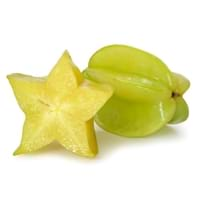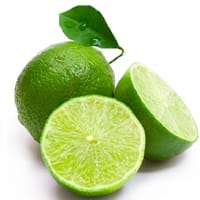Health Benefits
Cancer prevention, Heat stroke treatment
Arthritis treatment, Cholera treatment, Gout treatment, Heart care, Piles treatment, Scurvy treatment
General Benefits
Anti oxidant properties, Anti-inflammatory properties, Digestive aid, Maintains healthy cholesterol level, Treatment of sore eyes
Cures fever, Digestive aid, Eye care, Maintains healthy cholesterol level, Treatment of common cold
Skin Benefits
Anti-aging benefits, Heals sunburn, Skin rejuvenation
Anti-aging benefits, Skin rejuvenation, Treatment of acne, Treatment of dark spots
Hair Benefits
Promotes longer and healthier hair, Protects hair
Promotes longer and healthier hair, Treatment of dandruff
Allergy Symptoms
NA
Breathing difficulty, Coughing, Eye irritation, Hives, Inflammation, Nasal congestion, Runny nose, Skin rash, Wheezing
Side Effects
Nausea, Vomiting
Chances of sunburn
Best Time to Eat
As a snack in the late afternoon, Eat the fresh ones, avoid mixing with any other foods, don't eat after meal., Strictly avoid empty stomach
Along with meal, Best to drink warm water with lime on an empty stomach, Don't consume at night and before bed
Vitamin B5 (Pantothenic Acid)
Vitamin C (Ascorbic Acid)
Vitamin K (Phyllochinone)
Calories in Fresh Fruit with Peel
Not Available
Calories in Fresh Fruit without Peel
Not Available
Calories in Frozen Form
Not Available
Not Available
Calories in Dried Form
Not Available
Calories in Canned Form
Not Available
Calories in Jam
Not Available
Calories in Pie
Not Available
Type
Tree fruit
Citrus, Tree fruit
Season
Autumn, Spring, Summer
All seasons
Varieties
King, Bell, Sri Kembangan, Arkin and Fwang Tung
Key lime, Persian lime, Kaffir lime, Desert lime, Palestine Sweet Lime, Mexican Sweet Lime, Mary Ellen Sweet Lime
Color
Golden yellow, Green
Green
Inside Color
Yellowish Green
Light Green
Shape
Oval and Star(Cross section)
Round
Taste
Crisp, Juicy, Sweet
Acidic, Sour
Grows on
Not Available
Trees
Soil Type
Loam, Well-drained
Clay loam, Sandy loam
Climatic Conditions
Moist, Warm to hot climate
Sunny, Warm to hot climate
Facts about
- When carambola is cut horizontally, it forms a star.
- It is believed that carambola helps to cure hangover.
- Entire carambola is edible, including its skin.
- 2 varieties of carambola are cultivated: tart & sweet.
- Lime is the called as the powerhouse of flavors.
- Fresh lime juice is so acidic that it can dissolve concrete.
- Limes are more fragrant and acidic than lemons.
- Persian limes are almost seedless and thorn less.
Top Producer
Taiwan
China
Other Countries
Australia, Guyana, India, Israel, Malaysia, Philippines, United States of America
Argentina, Brazil, India, Mexico
Top Importer
Europe
United States of America
Top Exporter
Malaysia
Mexico
Botanical Name
Averrhoa carambola
Citrus aurantifolia
Synonym
Not Available
not available
Subkingdom
Tracheobionta
Tracheobionta
Division
Magnoliophyta
Magnoliophyta
Class
Magnoliopsida
Magnoliopsida
Order
Oxalidales
Sapindales
Family
Oxalidaceae
Rutaceae
Species
A. carambola
C. aurantifolia
Generic Group
Not Available
Citrus fruit
Difference Between Carambola and Lime
We might think that Carambola and Lime are similar with respect to nutritional value and health benefits. But the nutrient content of both fruits is different. Carambola and Lime Facts such as their taste, shape, color, and size are also distinct. The difference between Carambola and Lime is explained here.
The amount of calories in 100 gm of fresh Carambola and Lime with peel is 31.00 kcal and Not Available and the amount of calories without peel is Not Available and 30.00 kcal respectively. Thus, Carambola and Lime belong to and category.These fruits might or might not differ with respect to their scientific classification. The order of Carambola and Lime is Oxalidales and Sapindales respectively. Carambola belongs to Oxalidaceae family and Lime belongs to Rutaceae family. Carambola belongs to Averrhoa genus of A. carambola species and Lime belongs to Citrus genus of C. aurantifolia species. Beings plants, both fruits belong to Plantae Kingdom.









